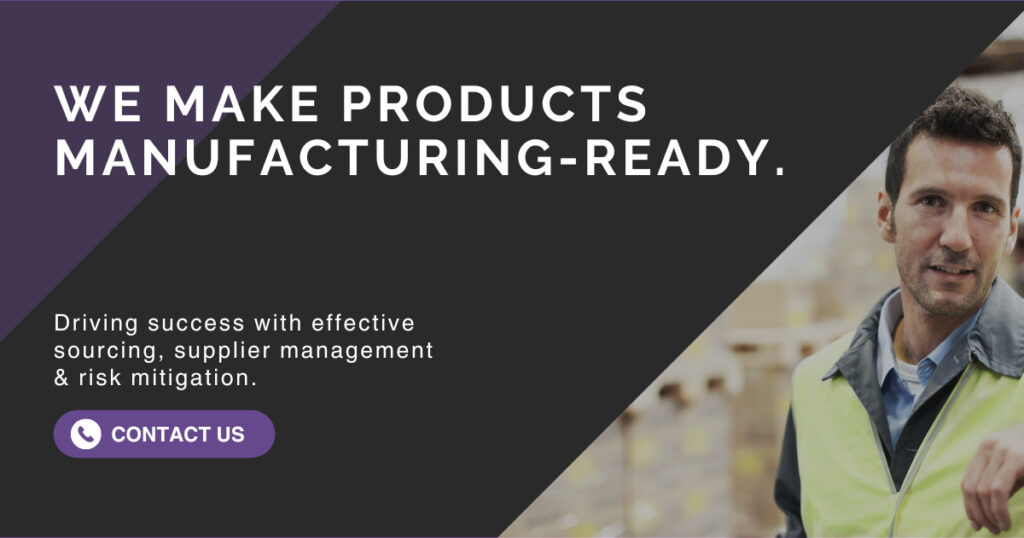Outsourcing design and engineering has been a popular trend in business, but it’s not a new concept. Take the example of Live Power Intelligence, who has since been acquired by Yes! Energy. They partnered with Zebulon Solutions to redesign and improve the reliability of their sensor network, leading to cost savings and enhanced data quality.
As a leading player in the field of data analytics and insights, Live Power Intelligence developed a cutting-edge sensor that detects variations in energy radiation on power transmission lines. However, they faced a challenge when it came to designing a product suitable for harsh field conditions.
Recognizing the need for expertise in designing a product for use in these conditions, they made the strategic decision to outsource the redesign of the product.
They collaborated with Zebulon Solutions to ensure the seamless integration of their data capturing technology into a highly-reliable sensor, enhancing their capabilities in data acquisition and analysis.
Read the full Yes! Energy story on our blog: Innovation in the Power Market
The results were revolutionary. The redesigned measurement sensors had fewer parts, cost less, reduced data transmission errors, improved safety and repairability, were more energy-efficient, functioned in wider temperature ranges, and had longer lifespans.
The success of the project led to Live Power Intelligence being acquired by Yes! Energy, a power market leader, in 2022. Yes! Energy has already deployed the redesigned measurement sensors nationwide, resulting in reliable data transmissions.
Zebulon Solutions’ pivotal contributions to improving the hardware and firmware of the sensors have significantly enhanced data quality for Yes! Energy’s customers.

In this post, we will delve into the compelling advantages of outsourcing design and engineering when they’re not your core competency, aspects to keep in mind when deciding on which outsourcing partner to go with.
Plus, we share our tried and true 6-step process for strategically outsourcing non-core competencies to maximize your business’s value and impact your bottom line.
The Benefits of Outsourcing Non-Core Competency Design and Engineering
When it comes to design and engineering, outsourcing non-core tasks is a perfect fit for a risk-mitigation culture. Outsourcing allows you to focus on your company’s core competencies and not have the resource drain of establishing and managing engineers. In essence, focus on what you do best and outsource the rest.
As for the reasons why companies choose to outsource, cost reduction is the most significant factor, cited by 70% of businesses in a recent study. Other reasons include flexibility (40%), speed to market (20%), and access to tools and processes and agility (15%).
From improved efficiency and access to specialized expertise, to leveraging, discover how outsourcing can fuel your business growth and success.
Improved Efficiency and Expertise
By embracing outsourcing, companies can strategically augment their teams with fractional experts, seamlessly integrating design engineers and operations personnel. This approach grants access to specialized expertise at various stages of product development or for specific tasks, resulting in high-quality outputs and an overall enhancement in efficiency.
Furthermore, outsourcing plays a crucial role in ensuring that businesses receive a fully manufacturable product, which can save valuable time during the development process when engaging with manufacturers.
By involving outsourced experts, additional testing that may be required can be efficiently carried out, streamlining the production process and minimizing potential delays. This comprehensive approach helps businesses achieve a more efficient and successful product development cycle.
Utilization of Tried and True Tactics
When going through the process of preparing your product for manufacturing, a lot of companies make missteps and mistakes due to their limited knowledge of the right tactics to use across the hardware marathon.
By embracing tactics that have been used by outsourced engineering companies for years, you gain access to the alignment of expertise with design, simulation, testing, and analysis. Outsourcing becomes a valuable strategy in this regard, granting access to advanced tactics that minimize issues vs handling it internally.

Accelerated Time-to-Market and Cost Savings
Outsourcing can streamline the design and engineering process, leading to faster product development, shorter time-to-market, and significant cost savings.
Many outsourced firms are able to apply more resources than would be practical to maintain in-house, thus spreading ‘engineering hours’ across a larger team to shorten the development time.
This can give you a competitive edge by enabling you to ship products to customers sooner, enhancing your market position.
Moreover, outsourcing non-core design and engineering activities brings notable cost savings. An employee can cost 125% to 140% of their salary when factoring in expenses such as administrative tasks, training, and downtime. Outsourcing work, particularly for specific projects, can be more cost-effective. By avoiding expenses related to hiring and training additional staff, maintaining infrastructure, and investing in specialized equipment, you can optimize your budget and allocate resources to core areas of your operations, ultimately improving your overall financial performance.
Access to Scalable Resources and Reduced Operational Complexities
Outsourcing provides the flexibility to scale resources up or down as needed. You can leverage the resources of outsourcing partners to meet fluctuating demand without the burden of maintaining a large in-house team.
Outsourcing design and engineering tasks enables businesses to offload the operational complexities associated with these activities. This frees up internal resources to focus on core competencies and strategic initiatives.

Risk Mitigation and Intellectual Property Protection
Collaborating with outsourced specialists provides a level of accountability and risk mitigation. Firms like Zebulon Solutions have established processes and quality assurance measures, which reduces your company’s exposure to risks associated with product failures or quality issues.
By leveraging outsourcing, you optimize efficiency, mitigate risks, and receive the necessary expertise to achieve your product goals. It’s a strategic move that not only ensures high-quality outcomes but also empowers you to focus on its core competencies, leading to long-term success.
Informational Insights
Outsourcing design and engineering tasks also brings valuable education about processes and failures. Outsourced firms have the opportunity to witness and engage with a wide range of clients and design challenges, enabling them to accumulate a wealth of knowledge and expertise.
This exposure to diverse products equips them with a unique perspective when tackling new projects. While maintaining strict walls of non-disclosure and confidentiality is important, they can leverage the lessons learned from past experiences to bring fresh insights and innovative approaches to the table.
You can leverage this knowledge to enhance relationships with startup investors, sharing insights about valuation, production steps, and costs. By demonstrating a comprehensive understanding of your product’s development journey, your company gains investors’ trust and support.
Aspects to Keep In Mind When Deciding on a partner to Outsource to
When making the decision on which partner to outsource design and engineering processes to, several critical factors come into play.
Aspects such as safeguarding intellectual property, seamless integration with existing infrastructures, achieving faster iterations, ensuring data security, and cultural alignment can play a big part in the business relationship you have with that partner.
Here are some aspects to keep in mind when choosing who to work with:
Intellectual Property Protection and Data Security
To mitigate the risks of unauthorized use, leakage, infringement of proprietary information, and data breaches when sharing sensitive data with external partners, businesses should implement strong contractual agreements, non-disclosure agreements (NDAs), intellectual property rights clauses, and robust data security protocols.
If you choose to outsource, this includes conducting due diligence on the outsourcing partner’s security practices, ensuring compliance with industry standards, and implementing stringent data security measures.
The right outsourced design and engineering company can offer intellectual property protection. They are accustomed to working under non-disclosure agreements and ensuring robust safeguards for your company’s proprietary technology.
Many design and engineering firms avoid working with direct competitors and limit file access to only those team members who are working directly on the project. When interviewing a design and engineering firm it is good to understand their business practices to ensure your intellectual property is protected.

Efficient Platform Integration
When considering outsourcing design and engineering, it is essential to evaluate the compatibility of software platforms and discuss the preferred platforms with the outsourced firm. Many engineering firms have experience working with multiple platforms and are willing to accommodate specific requirements.
But be aware of the use of freeware, as that is not an industry standard. Design firms can take files exported from freeware, but there may be translation issues that need to be resolved before design work can take place. Also, manufacturers are unlikely to accept freeware file exports and it increases the risk of quality issues.
No matter the software, by clearly communicating your needs and expectations regarding the platforms used, you can ensure a more streamlined integration and reduce the chances of compatibility challenges.
Faster Iteration and Innovation
Collaborating with external firms can lead to potential delays and inefficiencies in product development timelines. To mitigate these risks, it is important to establish regular communication, define clear project milestones, and implement efficient feedback processes. This ensures a fast-paced iteration cycle and minimizes any disruptions.
External design and engineering firms bring fresh perspectives, diverse experience, and access to larger teams, allowing for quick iterations and driving innovation. Their expertise and efficient development processes can accelerate product iteration cycles, keeping businesses at the forefront of market trends.
By leveraging the insights and efficient processes of these specialists, businesses can enhance their iteration cycles, leading to faster product development and a competitive edge in the market. By collaborating with such specialists, you can tap into their insights, expertise, and efficient development processes, accelerating product iteration cycles and staying at the forefront of market trends.
Cultural Alignment
Cultural differences between the outsourcing partner and the business can pose collaboration and understanding challenges. To mitigate these risks foster open communication channels to align on aspects like work hours, response expectations, and the level of professionalism.
Reputable design and engineering firms understand the importance of aligning with your brand identity, vision, and values. They work closely with you, incorporating their input to ensure the product reflects the desired user experience and brand image.

Zebulon Solutions’ 6-Step Method
Zebulon Solutions’ 6-step integrated approach for designing optimized products applies seamlessly to the idea of outsourcing non-core competencies. After a discovery phase to understand the scope of the project and goals, we follow a traditional development method:
- Concept: If you just have a sketch or 3D computer model, we will help you convert it to a design that can be prototyped. As with every step in our process, we will consider manufacturability and product costs. We ensure your concepts align with your requirements and long-term goals.
- Analysis: We facilitate a thorough evaluation, including preliminary costing analysis and a DFMEA session to identify potential product issues. We provide our independent perspective to foresee and address challenges before they impact your customers.
- Prototyping: We leverage various techniques like 3D printing, casting, and machining to create prototypes. We procure parts, evaluate performance, assemble subsystems, and conduct tests to refine your product’s functionality and design.
- Detailed Design: In this crucial step, our skilled team ensures your systems are manufacturable, considering the manufacturing processes that will be used and optimizing the design for the respective processes. We can finalize existing designs or convert your ideas into comprehensive, manufacturing-ready products with complete manufacturing-ready documentation.
- Validation Testing: We ensure that your product aligns with your requirements, including environmental conditions, user handling, and shipping. Zebulon Solutions develops test protocols, manages third-party labs, and conducts in-house testing to ensure your design meets all necessary requirements.
- Design Finalization: This stage concludes the process, incorporating any changes based upon test results and final modifications for manufacturing. Any substantial changes made during this stage should be retested to confirm the solutions didn’t create more problems before starting production.
Our holistic process optimizes functionality, reliability, size, time to market, development cost, and product cost, ensuring what you outsource aligns seamlessly with your overall product strategy.
Conclusion
Prioritizing your core competencies and outsourcing non-core functions like product design and engineering provides strategic value by accessing external expertise, advanced technologies, and optimizing resource allocation, ultimately enhancing your overall competitiveness.
Zebulon Solutions is an excellent example of an outsourcing partner that ensures a smooth and transparent collaboration. We effectively and efficiently streamline the journey to manufacturing and instill the utmost confidence in your product’s potential.
By embracing this collaborative approach, businesses can eliminate fear, uncertainty, and doubt, benefiting from the expertise and guidance of their outsourcing partners. So, take the leap, find the right partner, and position your company for long-term success.
